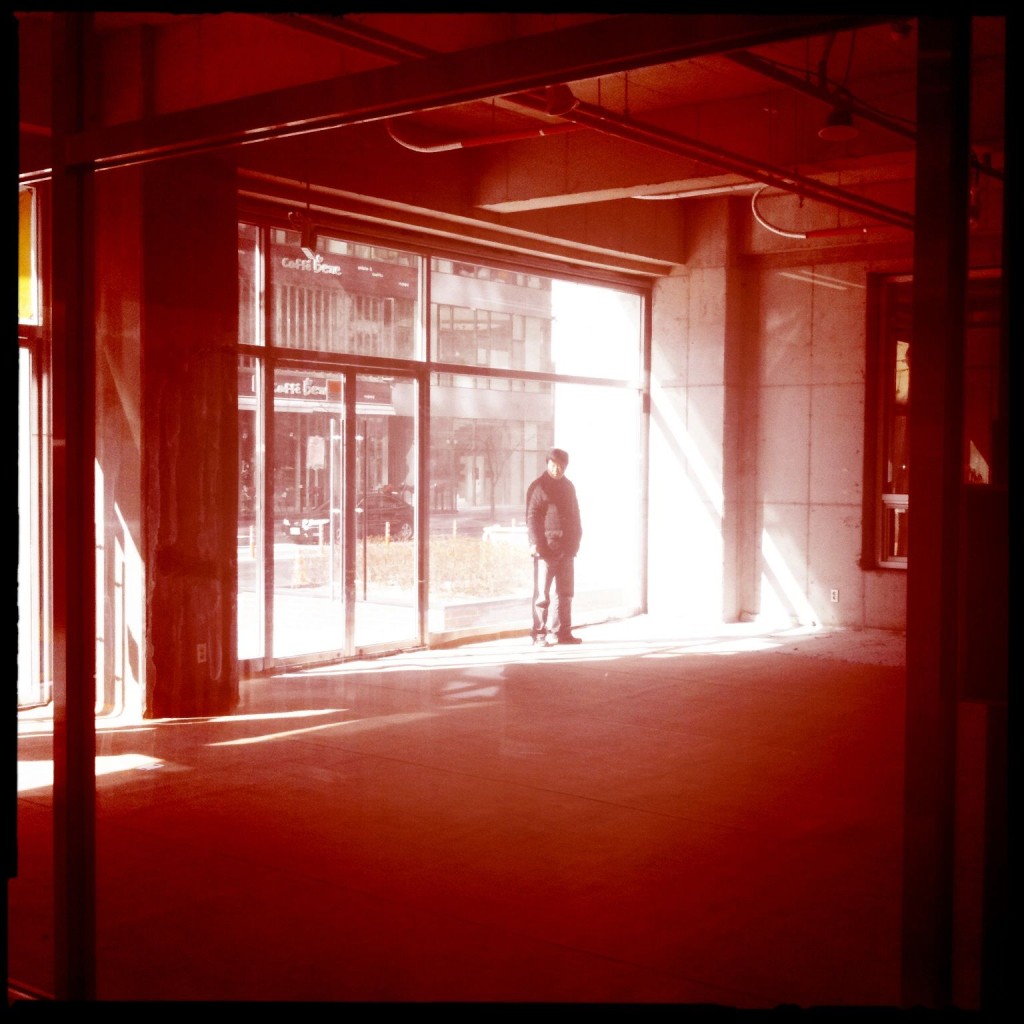Tag Archives: crime
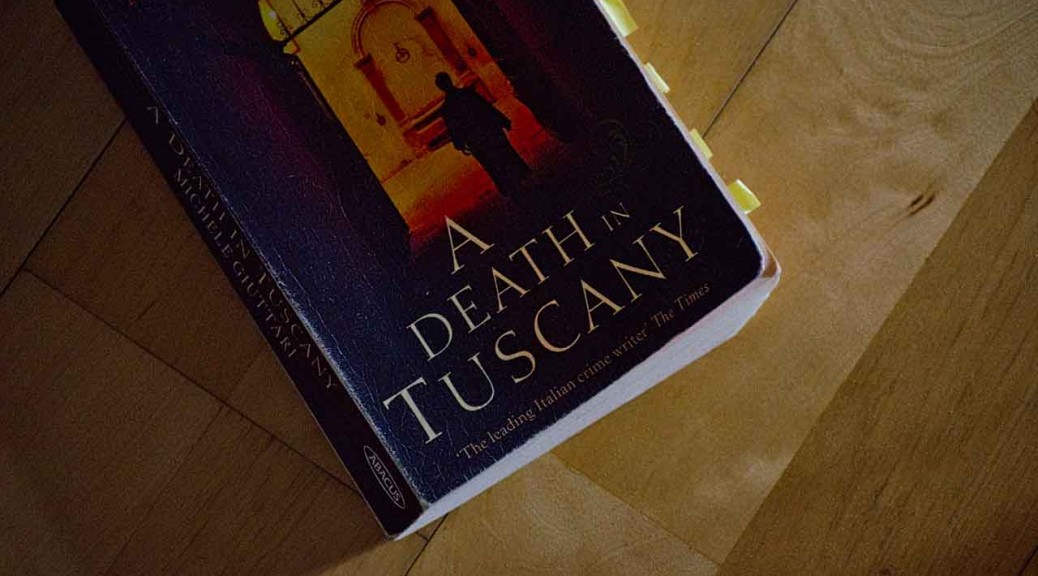
A Death in Tuscany
Giuttari, Michele, and Howard Curtis. A Death in Tuscany. London: Abacus, 2009. Print.
“Friendship is preferable to honors. It is better to be loved than honored.” Aristotle.
See Nicomechaen Ethics Book VIII Chapter 8 by Aristotle
River Arno flood of 1966
North Africans and Albanians in Florence p. 21-22
“The personal effects of the dead are always disturbing. It is as if they have suddenly lost their value along with their owner. They appear as they are, piles of objects more or less worn down by a use to which they wil no longer be put… But that wasn’t what disturbed Ferrara as he bent to pick up the wretched market-stall ring. It was the image of the girl reaching out her little hand to choose it from among others, the childish illusions she may have had in her mind as she slipped it on her finger.” p. 34
Police reports 119-121.
“Piazza della Republica to the Via degli Strozzi… Giambologna’s grim little devil at the corner of Via dei Vecchietti.” p. 125
see IL DIAVOLINO DEI VECCHIETTI
ilex evergreen oak
finding Claudia Pizzi’s leather shoulder bag containing her mobile and wallet with ID. p. 172
“He was the son of poor peasants from the Agro Pontino who had only ever known three coats of arms, the arms of Savoy, the Fascist emblem, and the shield of the Italian republic.” p. 197
“two columns of the Temple. The one in the north is Boaz, and the one in the south is Jachin.” p. 202
“The three columns symbolise Wisdom, Strength and Beauty.” p. 203
Masonic ritual and symbolism
Pigpen cipher
בֵּית־הַמִּקְדָּשׁ Solomon’s Temple
Italian August bank holiday
Marble quarries in Carrara
To read:
Purloined Letter short story by Edgar Alan Poe
Fargo/Coen Brothers (i) week syllabus 01/22-01/29
Film:
Fargo (1996) Coen brothers | Roger Deakins
Exercise:
Dramatic construction with index cards. Each card = one minute of screen time, one script page.
“writing on each of them a minimal number of words that describe a step in the narrative… Important character interactions in a scene.” (Mackendrick p. 45)
what each main character in the scene wants. scene objective. how the story moves forward.
Script to read:
Fargo (Coen brothers)
Course book:
On Film-making (Alexander Mackendrick)
Films to watch this week:
Nightfall | Jacques Tourneur (1957)
On Dangerous Ground | Nicholas Ray (1951)
Article “five films that influenced the Coens’ classic” from BFI
Articles to read:
none
Essay or script:
500 words on Fargo or neo-noir script 3-5 pages (Saturday)
Location scouting:
none
—-
Writing/Film Project:
Chukkumi (mornings)
—-
Book to read:
A Portrait of the Artist as a Young Man. James Joyce.
—-
Photo project:
none
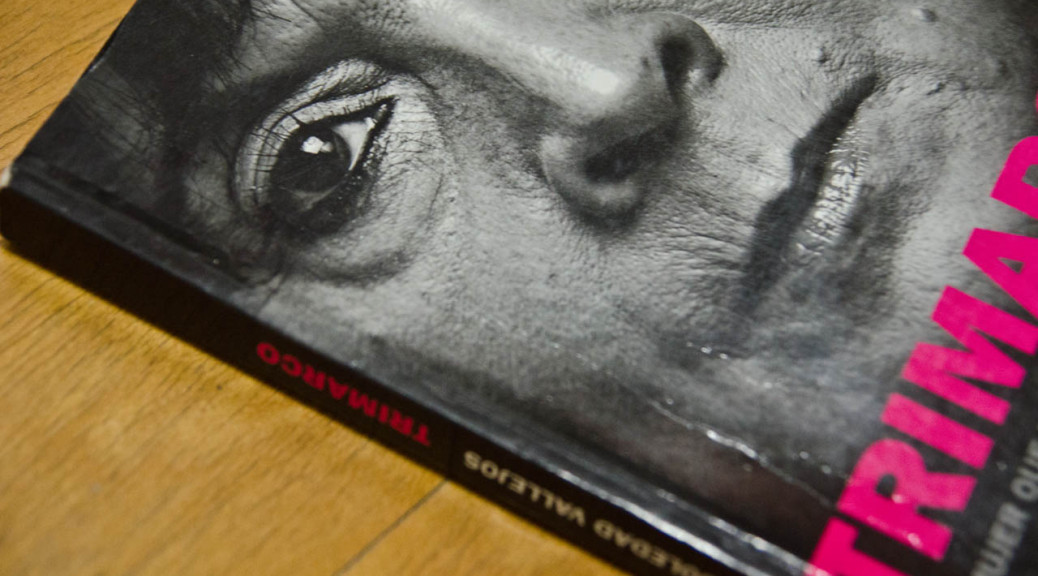
Trimarco
Vallejos, Soledad. Trimarco: la mujer que lucha por todas las mujeres. Argentina: Aguilar, 2013. Print.
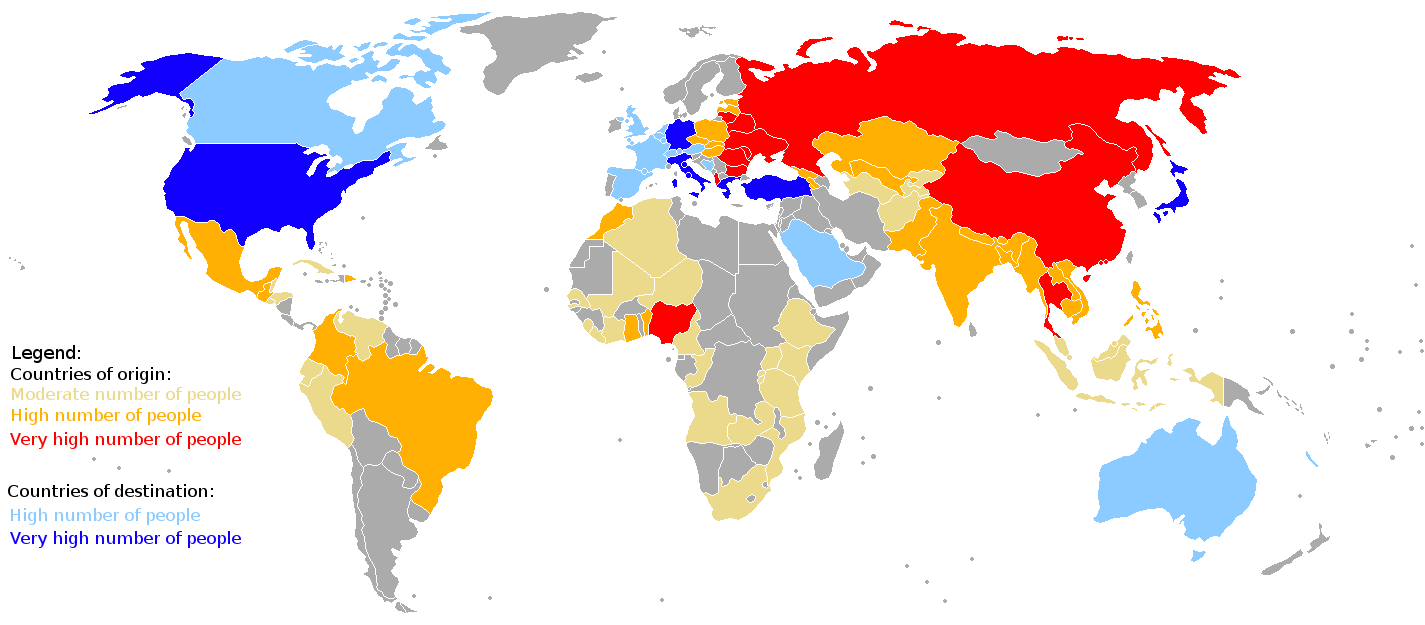
A schematic showing global human trafficking, with specific focus to women and children. The map was based mostly on the UNODC map at http://strobelife.files.wordpress.com/2010/06/human_trafficking_map.gif and was accompleted with the moderate countries of origin of this map: http://www.thewe.cc/thewe_/images_5/bbc/_44425220_human_traffick_416map.gif Some simplifications were made; ie some countries on the first map shows that there are countries of both origin and destination; notably Poland, Czech republic, Pakistan, India and China. The exact route of trafficking can be seen (to some degree, maps don’t match fully) at http://www.fas.org/irp/threat/754727.gif A map showing the exact trafficking routes can be found at http://commons.wikimedia.org/wiki/File:Trafficking_of_women,_children_and_men_routes.svg. Via Wikimedia.
Fundacíon María de Los Angeles
Revolución Libertadora (1955-1958)
“el ingenio. Era una masa no tan lehana que humeaba y angustiaba fantasías infantiles con la leyenda tucumana por excelencia: El Familiar, mezcla de espíritu y animal fantástico aterrador; ser con el que el patrón de todo ingenio estaba obligado a pactar si quería una buena zafra. A cambio de salvarlo de la ruina, El Familiar reclamaba como prenda la vida de un cañero al menos una vez al año. Por eso –dice– en los surcos desaparecían obreros.” p. 21
Jardín de la República
La Alianza Anticomunista Argentina (AAA) – Triple A
Horacio Verbitsky | periodista y escritor | derechos humanos / kirchnerista.
“prosíbulos ruteros de las provincias.” p. 61
monja incendiaria (Berta Povalej) “La monja rezaría mucho, pero tenía debilidad por entreverarse en asuntos terrenales.” p. 64
“Las redes de trata existían, el tráfico de mujeres, su explotación sexual en distintas provincias por parte de familias que operaban como pequeñas empresas y se vinculaban entre sí, también.” p. 67
“Hablaba de procesiones, de rituales, de magia negra.” p. 68
“la mención de la Pomba Gira, esa diosa del panteón umbanda, era habitual en el mundo de los tratantes.
–Y me dijo que los tratantes suelen usar ese tipo de rituales como métodos de sometimiento, como forma de doblegar la voluntad de la víctima. Y que son usuales eso rituales, esas ofrendas.
No importa dónde estén ubicados geográficamente: las fotos de los allanamientos a prostíbulos alimentados con mujeres traficadas y esclavizadas coinciden, todavía hoy, en retratar esos altares. Negros las más de las veces, como bañados en la cera de decenas de velas derretidas; presididos por San La Muerte, la Pomba Gira o algún otro santo de imagen impactante y origen sincrético.” p. 69
“Por decreo de Carlos Menem de 1991, cada año en esa fecha, San Miguel se convertía en la capital de la Argentina. Kirchner llegaba a ratificar la tradición, a seis semanas de asumido el cargo: era puro carisma y magnetismo político.” p. 70
“–Ella viene conmigo–dijo secamente la monja en la esquina. Y pasaron la primera valla del operativo de seguridad.
Trimarco se vuelve a asombrar al recordarlo. “Era como si nos hubieran invitado a las dos. Era una cosa que pasábamos sí o sí.”” p. 71
“Desconcertada por lo imprevisto, iba a hacerlo cuando vio a Povalej levantarse rauda y hablar con los hombres, que desistieron enseguida.” p. 72
“Alicia recuerda que todo “era muy triste”. “Vos sabés las veces que yo he ido y a ella le habían cortado la luz, y estaba ahí, entre las velas. Habían vendido todo, porque era que le tenía que poner nafta a los policías, que no les pagaban viáticos, tenía que pagarles el café con leche o la comida.” p. 74
Trimarco y Verón fueron entrevistados en el programa de Guillermo Andino.” p. 77
“agosto de 2004 desaparecería la bióloga alemana Annagreth Würgler.” p. 78
“Susana… Incluso una vez se disfrazó de prostituta y se metió en la zona de los travestis, en La Rioja, averiguando cosas.” p. 79-80
“Dice la causa: “Trimarco investigó la desparición de su hija, entrando al mundo de la noche”” p. 80
“Trimarco contó una vez más todo lo que había pasado desde la última mañana que vio a su hija. “Me contó que se metía en los lugares, ella era muy activa en ir a los lupanares”, recuerda el ex ministro Béliz.” p. 92
lupanares: prostíbulo
“–Graciasm señor presidente.
–No me gias señor presidente, decime Néstor.
–Sí, señor presidente.” p. 95
“Casi sin respirar, agrega Trimarco que alguna otra vez Kirchnerle dijo algo que no puede olvidar.:
–La única que va a aclarar esto sos vos.” p. 96
***”Posse, además, insistía en que los eufemismos no eran tales: “Candy” y “El Desafío” no eran prostíbulos, sino “whiskerías”, las mujeres que estaban allí lo hacían por su propia voluntad y no eran prostitutas, sino coperas que acompañaban a los clientes y tomaban algún trago con ellos.” p. 96
“Desde noviembre Trimarco insistía en que, de acuerdo con varios testimonios, Marita había sido aseinada y enterrada en una whiskeía que pertenecía a Lidia Irma Medina y sus hijos.” p. 102
“Cuatro días después, se había excavado en los patios de los prostíbulos “La isla” y “Candy”. Allí no habían restos humanos.” p. 102
“El cuerpo de Paulina Lebbos apareció a metros de una ruta en las afueras de la capital, un sábado cuando caían el sol. Dos muchachos de campo que pasaban al galope lo vieron y avisaron a la policía. La chica, de 24 años, llegvaba trece días desaparecida.” p. 102
“Periodistas locales que pasaron la noche en guardia al otro lado de la ruta, para no perder pisada de los trabajos policiales, todavía hoy recuerdan el aire viciado, el olor intenso que traía el viento y que se intensificó, más tarde, cuando el cuerpo fue preparado en el patio de la morgue para la autopsia. A Paulina, además, le faltaba parte de una pierna. Luego se sabría que no había muerto en el lugar donde había muerto en el lugar donde había sido hallada, que llevaba días fallecida, que alguien la había escondido y preservado hasta entonces.” 104
“Como erra su costumbre, Trimarco pidió una misa por su hija en la basílica Nuestra Señora de la Merced, la misma en la que Manuel Belgrano había rogado antes de la batalla de Tucumán.” p. 105
“La telenovela Vidas robadas mantendría distancias, pero en el corazón de la historia iba a latir el caso Verón.” p. 118
“Las dos muheres compartían un frente común: a diferencia de Fernández, sostenía que la ley no podía obligar a una víctima de trata a demostrar que había sido forzada, que estaba siendo sometida en contra de su voluntad, que no había dad su consentimiento para ser explotada.” p. 122
“el juicio de Bell Ville, en el que dos chicas secuestradas y explotadas habían sido juzgadas como victimarias de una tercera,” p. 128
Documentary “Fragmentos de una Busqueda” (2009) Dir. Pablo Milstein, Norberto Ludín.
“en la Argentina, de acuerdo con estudios de la Organización Internacional de Migraciones, el 80 por ciento de las víctimas de trata era personas nacidas en el mismo país.” p. 132-133
“un rumor persistente señalaba que en esa zona de La Rioja podía estar Marita, pero ya no viva, sino asesinada y enterrrada a la vera de la ruta, camino a la cordillera. Era una región largamente sospechada. De allí había desaparecido en 2004 la turista suiza Annagreth Würgler.” p. 135
“Quizá el ejemplo más claro fuera el personake de Nacha, la mujer del jefe de la red, una ex víctima explotada que había terminado por enamorar a su captor y convivir con él como su legítima ante los ojos de todos los demás, que ignoraban cómo se habían conocido.” p. 141
“hablaban de bueyes perdidos mientras la luz del día huía.” p. 144
“Si la madre de Marita arremetía contra puertas cuando estaba sola y nadie la escuchaba, acompañada de una cámara y un micrófono, ya premiada y en pleno armado de la Fundación, resultaba implacable.” p. 145
Trimarco: “‘Hago todo esto sin darme cuenta. Como madre, tengo el deber de luchar contra viento y marea para encontrar a mi hija.'” p. 145
“–Entré al Desafío, estructura de dos pisos, varias habitaciones, tipo hotelm un portón al costado. Arriba había un altillo, con un altar a San La Muerte, tenía que ponerle cadenas de oro. El Candy da al fondo de la casa de la Lidia Medina, la casa azul.” p. 157
“Trimarco se ha peleado definitivamente con casi todas las personas que comparten su cotidianeidad.” p. 159
On Trimarco: “Muy directa, muy transparente. Muy franca. Eso es bueno y a veces no tanto, en la relación con ella se generan a veces situaciones por eso. Pero las prefiero”. p. 160
“Piquillín, una pequeña localidad cordobesa. Era jueves. Querían desenterrar restos para saver si la historia de “la tucumanita”, como las prostitutas de los locales “Las vampiras” y “El mote” llamadan al alma en pena de una joven aseinada por proxenetas, se correspondía con la realidad. Si ahí yacía un cuerpo, algunos indicios de testimonios hacían sospechar que podía ser el de Marita Verón.” p. 162
“Pero después, cuando entendés, cada vez que se paraba la máquina, lo que hacías era rezar para que no fuera un hueso humano. Lo que tiraba eran huesos de perro, de pollo…–dice D’Antona.” p. 163
“Ese día, la fiscal abrió uno de los prostíbulos y lo que había no eran habitaciones, sino celdas. “Habitaciones de 3 por 3, colchones en el piso, cuchetas de tres, una sola ventilación, una habitación cuadradita así, no con rejas, sino con barrotes gruesos.”” p. 163
“D’Antona era un penalista que había defendido al ex presidente Carlos Menem en la causa por la explosión de la fábrica de armas de Río Tercero.” p. 165
“insistía en que el caso de Marita era de derechos humanos y ella, Trimarco, una luchadora que encarnaba la continuidad: significaba en el siglo XXI lo que Madres y Abuelas habían significado para el siglo XX.” p. 169
Book: Es Cristo que pasa by Josemaría Escrivá de Balanguer (founder of Opus Dei)
“También en el terreno del juicio por su hija, la figura de Trimarco sirvió de excusa para que terceros delimitaran campos y plantearan confrontación kirchnerismo-antikirchnerismo.” p. 209
El zar tucumano by José Sbrocco (unauthorized biography of José Alperovich)
See article: “Un periodista de Mendoza dice que ‘Marita no fue secuestrada, sino qie ejercía la prostitución por su cuenta.” Contexto magazine. Found in Notas p. 221
“Trimarco criticó a la policía por la ceguera, porque el machismo impedía a los oficiales tomar denuncias, actuar rápido, rescatar a chicas de sus victimarios.” p. 238
“Han afirmado muy bien los miembros del tribunal: lo que necesitan ellos es tener pruebas”, dice, convencida de que los testimonios no lograron aportar la luz suficiente para condenar a nadie.” p. 239
“Stella Maris Córdoba celebró que la ley nueva no dijera que una víctima puede consentir su explotación,” p. 240
“¿Que sufren las víctimas? La desconfianza permanente en el proceso penal, cuando saben que su victimario puede estar caminando a la vuelta de la esquina, amenazando tanto a ella como a su familia.” p. 240
“No importó el partido político: todos los representantes coincidían en la importancia de Trimarco, en la visibilidad que si tenacidad había dado a un tema que, hasta 2002, no figuraba en la agenda política, y mucho menos en la agenda pública.” p. 241
Fiction films on human trafficking: Trade, Srpski film (A Serbian Film), Taken, Nina, La mosca en la ceniza y Tráfico humano (list from wikipedia entry: Trata de personas)
La Mosca en la ceniza (2010) Dir. Gabriela David
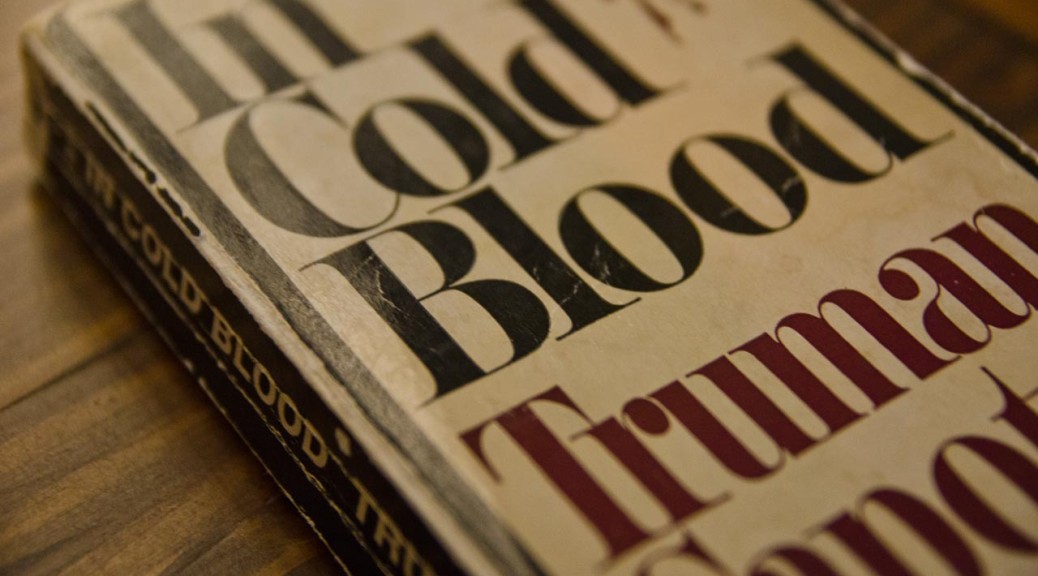
In Cold Blood | II
Capote, Truman. In Cold Blood. New York, New York: Signet, 1965.
“She was seventy-four years old, but in Nye’s opinion, “looked younger–maybe ten minutes younger.”” p. 200
“Uh-huh. Came all the way from Kansas on a parole case. Well, I’m just a dizzy blonde. I believe you. but I wouldn’t tell that tale to any brunettes.” p. 202
“”Little punk tried to sweet-talk me out of paying rent the last week he was here.” She chuckled, presumably at the absurdity of such an ambition.” p. 202
“Then he wrote ‘For Sale’ on the windshield. One day I heard a sucker stop and offer him forty bucks–that’s forty more than it was worth.” p. 202-203
“Beyond one door, a drunken tenant wailed and sang in the firm grip of either gladness or grief. “Boil down, Dutch! Turn it off or out you go!” the woman yelled.” p. 203
Circle City, Alaska
“Here was a picture of the two together bathing naked in a diamond-watered Colorado creek, the brother, a pot-bellied, sun-blackened cupid, clutching his sister’s hand and giggling, as though the tumbling stream contained ghostly tickling fingers.” p. 210
“Neither one had ever before referred to the ultimate penalty in the State of Kansas–the gallows, or death in The Corner, as the inmates of Kansas State Penitentiary have named the shed that houses the equipment required to hand a man.” p. 215
“Valley View Cemetery, that gray-and-green island of tombs and trees and flowered paths, a restful, leafy, whispering oasis lying like a cool piece of cloud shade on the luminous wheat plains north of town.” p. 224
“Envy was constantly with him; the Enemy was anyone who was someone he wanted to be or who had anything he wanted to have.” p. 228
“Hot islands and buried gold, diving deep in fire-blue seas toward sunken treasure–such dreams were gone.” p. 230
“Once Nancy had said to him, “One summer, when we were in Colorado, I saw where the Arkansas begins. The exact place. You wouldn’t believe it though. That it was our river. It’s not the same color. But pure as drinking water. And fast. And full of rocks. Whirlpools. Daddy caught a trout.”” p. 233
“Perry soon developed his own personal gift for spying bottles. At first he merely indicated to the boy the whereabouts of his finds; he thought it too undignified to scurry about collecting them himself. It was all “pretty silly,” just “kids stuff.” Nevertheless, the game generated a treasure-hunt excitement, and presently he, too, succumbed to the fun, the fervor of this quest for refundable empties.” p. 238-239
“On an Arizona highway, a two-car caravan is flashing across sagebrush country–the mesa country of hawks and rattlesnakes and towering red rocks.” p. 262
“He continues to contemplate the scenery, to read Burma-Shave doggerel, and to count the carcasses of shotgunned coyotes festooning ranch fences.” p. 263
“He carried the knife and a flashlight. I had the gun.The house looked tremendous in the moonlight. Looked empty. I remember hoping there was nobody home–” p. 267
“The one window was curtained with Venetian blinds, but moonlight was coming through.” p. 267
“Among Garden City’s animals are two gray tomcats who are always together–thin, dirty strays with strange and clever habits. The chief ceremony of their day is performed at twilight. First they trot the length of Main Street, stopping to scrutinize the engine grilles of parked automobiles, particularly those stationed in front of the two hotels, the Windsor and Warren, for these cars, usually the property of travelers from afar, often yield what the bony, methodical creatures are hunting: slaughtered birds–crows, chickadees, and sparrows foolhardy enough to have flown into the path of oncoming motorists. Using their paws as though they are surgical instruments, the cats extract from the grilles every feathery particle.” p. 278
“Late at night, when the only noises were snores and coughs and the mournful whistle-wailings of Santa Fe trains rumbling through the darkened town, he honed the wire against the cell’s concrete floor. And while he worked he schemed.” p. 296
“a notion that he “might not be normal, maybe insane” had troubled him “even when I was little, and my sisters laughed because I liked moonlight. To hide in the shadows and watch the moon” p. 299
“the M’Naghten Rule, the ancient British importation which contends that if the accused knew the nature of his act, and knew it was wrong, then he is mentally competent and responsible for his actions.” p. 301
“The fine lawn surrounding the Clutter house was also newly green, and trespassers upon it, women anxious to have a closer look at the uninhabited home, crept across the grass and peered through the windows as though hopeful but fearful of discerning, in the gloom beyond the pleasant flower-print curtains, grim apparitions.” p. 304
“”In exodus Twenty, Verse Thirteen, we have one of the Ten Commandments: ‘Thou shalt not kill.’ This refers to unlawful killing. Of course it does, because in the next chapter, Verse Twelve, the penalty for disobedience of that Commandment reads: ‘He that smiteth a man, so that he die, share be surely put to death.’ Now, Mr. Fleming would have you believe that all this was changed by the coming of Christ. Not so. For Christ says, ‘Think not that I am come to destroy the law, or the prophets. I am not come to destroy, but to fulfill.’ And finally–” Green fumbled, and seemed to accidentally shut the Bible, whereupon the visiting legal dignitaries grinned and nudged each other, for this was a venerable courtroom ploy–the lawyer who while reading from the Scriptures pretends to lose his place, and then remarks, as Green now did, “Never mind. I think I can quote from memory. Genesis Nine, Verses Six: ‘Whoso sheddeth man’s blood, by man shall his blood be shed.'”
“soft slippers (in most American prisons such slippers are a condemned man’s customary footwear)” p. 347
“For this is the state’s execution chamber; when a man is brought here to be hanged, the prisoners say he has “gone to The Corner,” or, alternatively, “paid a visit to the warehouse.” p. 348
“Alvin “Old Creepy” Karpis, Charles “Pretty Boy” Floyd, Clyde Barrow and his homicidal sweetheart, Bonnie Parker” p. 348
“Andrews suffered no delusions, no false perceptions, no hallucinations, but the primary illness of separation of thinking from feeling. He understood the nature of his acts, and that they were prohibited, and that he was subject to punishment. “But,” to quote Dr. Joseph Satten, one of the examiners, “Lowell Lee Andrews felt no emotions whatsoever. He considered himself the only important, only significant person in the world. And in his own seclusive world it seemed to him just as right to kill his mother as to kill an animal or a fly.” p. 354
“The doors wide open. We could see the witnesses, a lot of guards, the doctor and the warden–every damn thing but the gallows. It was off at an angle, but we could see its shadow. A shadow on the wall like the shadow of a boxing ring.” p. 371
“Elegy Written in a Country Churchyard” by Thomas Gray
“The boats of heraldry, the pomp of pow’r
And all that beauty, all that wealth e’er gave,
Await alike the inevitable hour:
The paths of glory lead but to the grave.” p. 372
Andrews “He liked to imagine himself roaming around Chicago or Los Angeles with a machine gun inside a violin case. Cooling guys. Said he’d charge a thousand bucks per stiff.” p. 373
“I couldn’t rest in peace till the ones responsible had taken that ride on the Big Swing.” p. 376
“I believe in hanging. Just so long as I’m not the one being hanged.” p. 376
“A hearse, its blazing headlights beaded with rain, drove into the warehouse, and the body, placed on a litter and shrouded under a blanket, was carried to the hearse and out into the night.” p. 380
“”Gosh, I didn’t know he was such a shrimp.”
“Yeah, he’s little. But so is a tarantula.”” p. 381
Capote
Watched Capote (2005) | Dir.: Bennett Miller (Moneyball, 2011; Foxcatcher, 2014, ) To watch The Cruise (1998)
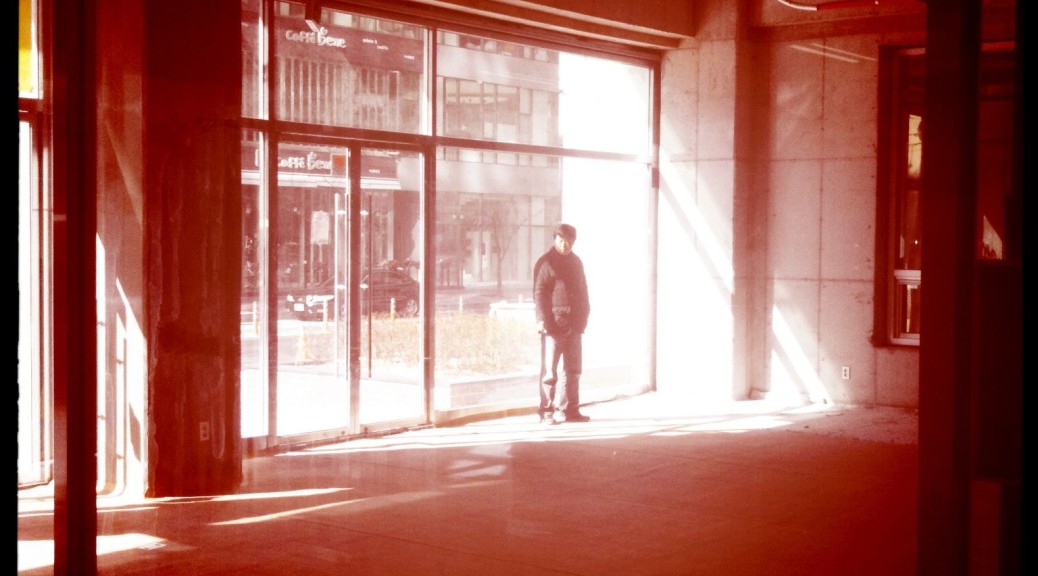
the big sleep
started listening to the audiobook of the big sleep by raymond chandler
LA detective. film noir. 1930s/1940s.


